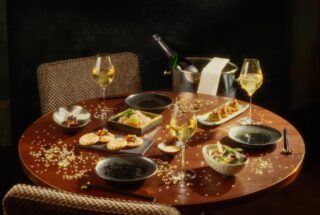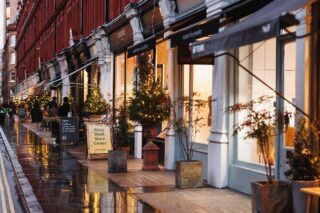This website uses cookies so that we can provide you with the best user experience possible. Cookie information is stored in your browser and performs functions such as recognising you when you return to our website and helping our team to understand which sections of the website you find most interesting and useful.
Chef’s Table: Michelin star chef Mauro Colagreco on biodiversity, working with UNESCO and how food can drive change
By Shivani Dubey | 22 April 2025 | Food & Drink
Tempus meets Michelin star chef Mauro Colagreco to talk about his extensive work with UNESCO and his commitment to sustainability and championing biodiversity
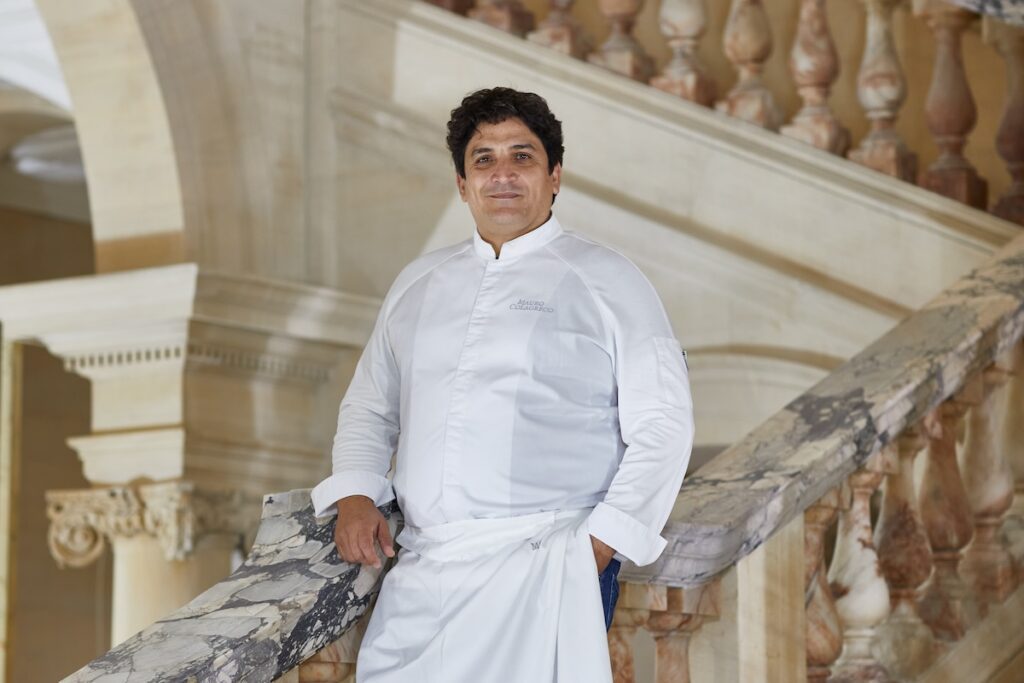 Chef Mauro Colagreco has always been a champion of sustainability. If you visit any of his incredible restaurants around the world — including his namesake at Raffles London, which just earned its first Michelin star — you will see beautifully plated food that champions natural ingredients that came straight from the earth.
Chef Mauro Colagreco has always been a champion of sustainability. If you visit any of his incredible restaurants around the world — including his namesake at Raffles London, which just earned its first Michelin star — you will see beautifully plated food that champions natural ingredients that came straight from the earth.
Such is his commitment to sustainability, that Mauro Colagreco was appointed the UNESCO Ambassador for Biodiversity, making him the only chef in the world to receive this honour. Through his work with UNESCO, Mauro has found ways to champion different biospheres of the world, not only through the food he creates, but also through generating an active interest among others to become guardians of our environment.
So, for the next edition of our Chef’s Table series — and fittingly on the occasion of Earth Day — we spoke with multifaceted chef Mauro Colagreco to talk about his commitment to sustainability and biodiversity, his work with UNESCO, his comfort foods and why he believes food can be a driving force for change.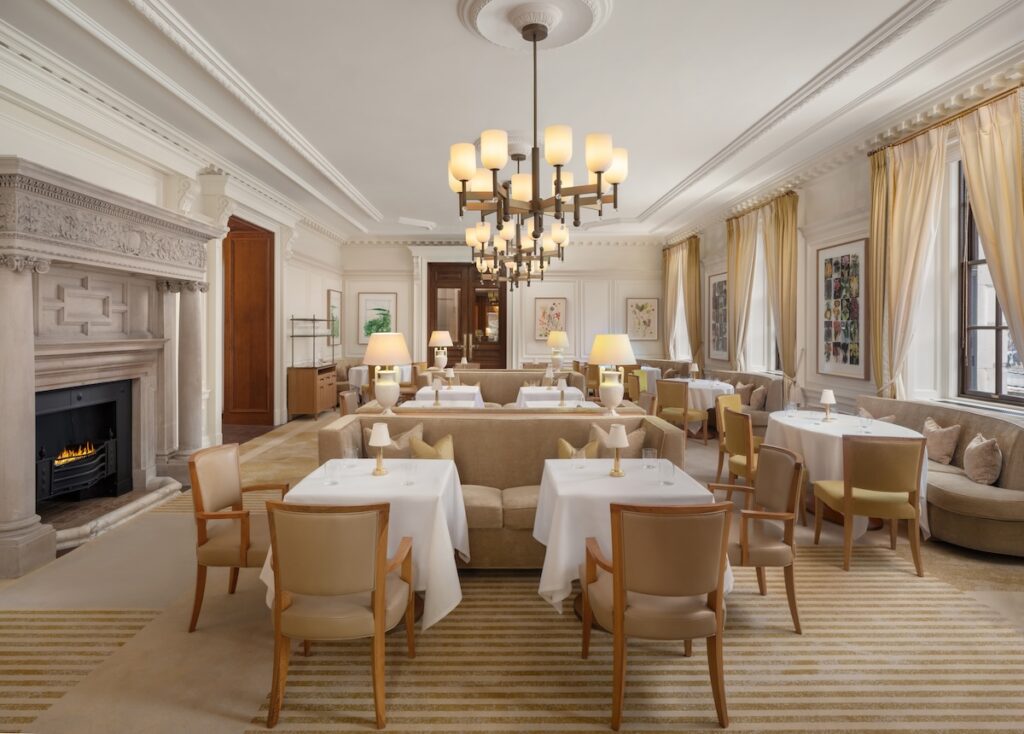 You run the gourmet restaurant Mauro Colagreco in London — among other restaurants — in Westminster. What sets your menu apart?
You run the gourmet restaurant Mauro Colagreco in London — among other restaurants — in Westminster. What sets your menu apart?
At Mauro Colagreco at Raffles London, we offer a sustainable dining experience that takes the paths of English gardens, telling the story of the United Kingdom through a menu that reveals more than 70 varieties of vegetables and fruits produced in the country. Attention to the Earth is always at the centre of our creations. Through the enhancement of the link between agriculture and cuisine, we offer our guests the excellence of the British terroir with gratitude and passion.
We have carried out research on the region and carefully selected products. To do this, we work in collaboration with local farmers and independent suppliers who take care of the territory through sustainable practices, guaranteeing extraordinary and sometimes unexpected flavors in produce. Our vision of sustainability also includes ethical sourcing and biodegradable packaging. It is a cuisine that magnifies nature in pictorial dishes.
How would you describe your style as a chef? What do you want your customers to feel when they come to your restaurants?
If I manage to touch our guests, to produce emotions, I tell my team that our job is done! I am convinced that through a gastronomic experience we can contribute to refining our perceptions and emotions, elevating our spirits and reconnecting with the earth. In this sense, with the teams, we work to create experiences that highlight the beauty of the fruits of the earth, the know-how of local producers, our learnings from working in our permaculture and biodynamic gardens, our commitments to circular gastronomy that respects the earth and biodiversity.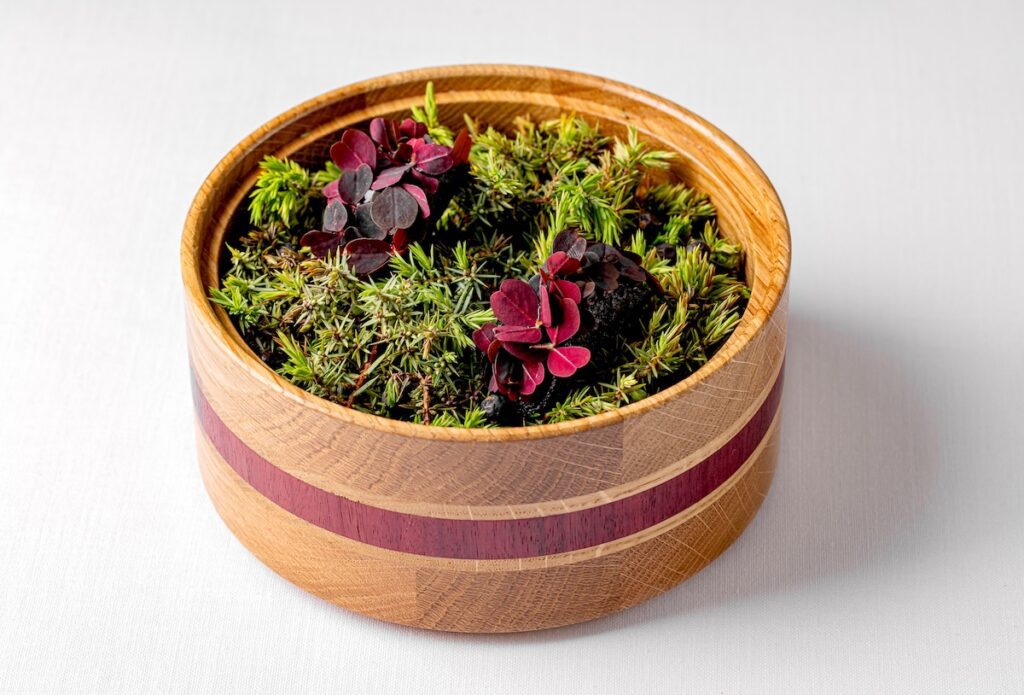 You have had a very rich culinary career, and London’s Mauro Colagreco has just been awarded a Michelin star. Where does your passion for cooking come from?
You have had a very rich culinary career, and London’s Mauro Colagreco has just been awarded a Michelin star. Where does your passion for cooking come from?
It directly comes from the joy of sharing, my passion for the job and the conviction that through a gastronomy that respects the cycles of nature and ecosystems, we can have a positive impact on our environments and contribute to the paradigm shift we need. Cooking, feeding someone is an act of love. To eat is to choose to connect with life. Our current food system has moved away from the essence of food. Connecting food to life and gastronomy to the land is my greatest motivation!
Your kitchen has always been focused on promoting sustainability and biodiversity. What made you want to present food in this way? And what are the practices you employ in the kitchen to make sure you’re sticking to that philosophy?
These are values with very deep roots, a heritage that I received from my family, a kind of closeness and love for the land. Then when I arrived in Menton to open my own restaurant, I was amazed by the natural and cultural beauty of this region between sea, gardens and mountains. I set out to discover the products, meet local producers and craftsmen and I chose to work with what nature offers us while respecting its rhythms.
I started working on my garden and I developed an agricultural project in permaculture and biodynamics. A holistic view that holds that the Earth is a living being and that everything is connected and interdependent. We carry out this work in favour of cultivated biodiversity in our gardens and with our community, we belong to a network of 50 local farmers committed to safeguarding ancient seeds and local varieties.
All this work and experience is the basis of this concept of Circular Gastronomy that we support. Circular gastronomy is a set of commitments to preserve the planet and ensure a future for the children of the earth through the world of food. We assert those with concrete actions that are not reserved for haute gastronomy and that can be applied to more popular concepts (such as our pizzerias, bakeries, burgers, etc).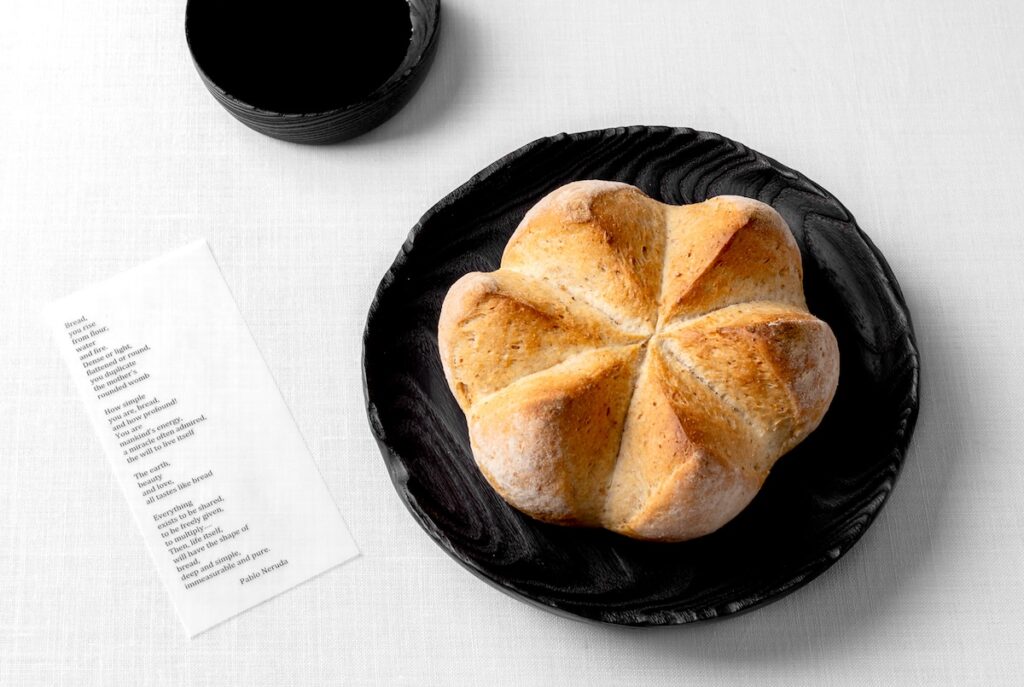 You are the first chef to be appointed UNESCO Goodwill Ambassador for Biodiversity. Can you tell us a little more about this?
You are the first chef to be appointed UNESCO Goodwill Ambassador for Biodiversity. Can you tell us a little more about this?
With great joy, this year I received the renewal of my mandate with the objective of representing UNESCO and mobilizing the interest and support of the public on issues of biodiversity and ecology. As a goodwill ambassador, I participated as a member of the UNESCO delegation at the 16th COP Biodiversity in Cali, Colombia in November 2024. On this occasion, I took the opportunity to make a solemn appeal for all governments, international organisations, leaders, educators and citizens to join forces to create a global agenda to teach children to make better food choices in their daily lives. The ambition is to transform every child educated into a guardian of biodiversity.
Why is this cause so important to you?
I am convinced that cooking is a powerful driver of change and by changing the way we produce our food, we are changing our diet, we are changing our society and therefore we are changing our values. Recently to promote UNESCO biospheres and raise awareness on these learning places for sustainable development, I visited the Living Coast, the UK biosphere of Brighton and Hove and was amazed by this committed community who works every and with great success to connect people and nature and save biodiversity.
I really encourage everyone to visit these sites as they are real places of hope. I really believe that thanks to a more circular gastronomy, respectful of nature’s cycles, it is possible to feed a growing population without having to destroy the planet. These people are living proof of that belief.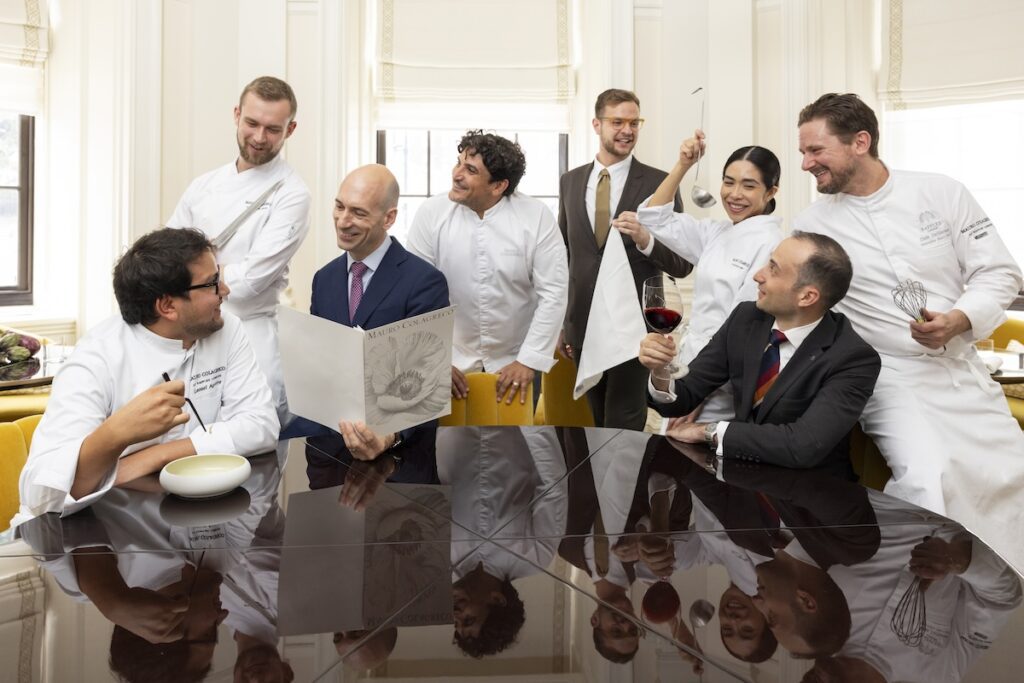 Outside of the restaurant, what is your favourite dish?
Outside of the restaurant, what is your favourite dish?
I love a good stew. I still remember the one my mother did, entering home after school and knowing that was the meal still makes me smile. Food, through aromas and taste is a super powerful memory lane.
Why is this comfort food for you? Do you have any special memories associated with this dish?
I love this dish because it’s very comforting and always different! We can give different shades depending on the mix of ingredients, the vegetables that are available, the herbs and condiments. It’s a dish that my mother loved to make because everyone loved it and the next day we made a soup with the broth that she had defatted by leaving it in the cold. The pot-au-feu is a dish for sharing, it is the family table and the warm atmosphere! I love making it for my family with vegetables from the garden and a generous marrow bone served with garlic toast: a real treat.
How has your upbringing influenced your cooking?
I was born into a family of Italian and Spanish origin and the tradition of large sharing tables marked my childhood. Everyone in my family loved to cook and please others through good food. I had a very happy childhood! My parents loved to travel and discover other traditions and I received this open-mindedness towards other cultures as well. These are experiences that have allowed me to express my creativity in total freedom.
To know more about Chef’s Table and chef Mauro Colagreco, subscribe to our weekly newsletter, the Tempus Edit — and read other interviews in our Chef’s Table series.


